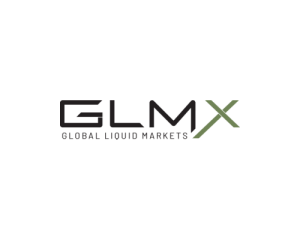In order to achieve its idiosyncratic objectives, securities finance demands a comprehensive solution, different from those available in the outright markets it supports. Advanced technology for securities finance trading and trade life-cycle management, with interconnectivity, is essential for users, delivering efficiency and usable transparency where it is needed.
Securities finance and the equity market it supports require easily accessible, relatively low-cost technology platforms in order to bridge supply and demand across deep and diverse liquidity pools. This leads to better pricing and creates a more resilient market. Also similar to the outright markets, securities finance benefits from the efficiencies of post-trade capabilities that automate risky and time-consuming manual processes.
Securities finance and outright markets do not benefit from the same type of transparency however. The persistent-credit-dependent nature of the securities finance business makes the idea of a NASDAQ-like central limit order book, or CLOB, unrealistic or, perhaps, even detrimental. Instead, there is value to lenders and borrowers negotiating bilaterally with counterparties to lock in the best trade economics while managing credit, balance sheet collateral, haircuts, clearing mechanisms and other persistent exposures. Much more valuable than transparency is empowering individual participants to analyze their own data, leading to decision-making efficiency. Only technology can help achieve this type of internal transparency in a scalable manner.
Regulators have begun to agree with the idea that transparency in securities finance has a meaning different from other markets. Most recently, the US Securities and Exchange Commission (SEC) changed its rules on securities finance transparency to request end of day (EOD) data only instead of data every 15 minutes. Regulators will still get what they need: according to the SEC, the rule “will provide regulators with information for their market oversight functions.” This is good news for market participants as the EOD output is unlikely to impede intra-day flows.
Securities finance is a market that needs its own applications, built for its own workflows and best practices. The ability to engage bilaterally or multilaterally, using a common, highly efficient, error-resistant technology framework has been a great leap forward beyond exchanging instant messages and emails. In the absence of effective technology, the high operational cost of discovering adequate liquidity in today’s expansive securities finance ecosystem risks impeding these existentially critical flows. The next phase of evolution in securities finance technology will be technology which connects users across markets, enabling small and large firms alike to benefit from automation while capturing new pools of liquidity across fixed income and equity securities.
Who Is Automated Now and Who Needs to Be
In most markets, a natural outcome is that the biggest firms invest the most in technology, which perpetuates their leadership position. These firms can afford to build their own systems that deliver internal automation and seek out external execution venues when they offer better, more cost-effective liquidity. In securities lending, the top four agent lenders represent upwards of 60-70% of the market by assets on-loan, while the top handful of prime brokers account for over 80% of borrows. Unsurprisingly, these firms frequently work together on industry projects to improve bilateral flows.
Smaller firms do not have the same resources, but a new generation of technology offerings in securities finance provides the tools to connect a wider swath of participants. This evolution can reduce costs and improve trading efficiencies, irrespective of whether a smaller firm has its own internal proprietary order management system or not. Since technology flows all trade information back to client books and records, the use of an execution platform for trade automation versus email or other older messaging systems makes smaller firms more attractive to their counterparties, particularly the technology-enabled market-leading firms. This technology-powered advantage for smaller participants also can extend to preferred pricing as counterparties reflect increased processing efficiency and error reduction.
Trading tools are agnostic to the type of client behind the screen: they can digitalize workflows of large and small lenders, prime brokers, repo desks, corporate treasurers and others, so long as credit agreements exist on both sides. The natural extension of these efficiencies is that more counterparties are drawn into a central venue , improving liquidity for all involved. Technology that provides a path to a deep, efficient funding ecosystem will bring together distinct but adjacent market participants and streamline borrowing and lending across desks, firms and markets.
As securities lending evolves in the next few years, businesses will continue to invest in technology as a natural reflex to keep up with growing volumes and increasingly complex workflows. Trading technologies that deliver value by providing a centralized solution to access market wide liquidity, automate workflows and provide sustained product development will capture the business.
Creating a Liquidity Pool in Securities Lending
It is a challenging idea to suggest that ‘new’ liquidity can be created in securities lending with no change in pricing dynamics: after all, demand exists because a hedge fund client or bank funding manager has a need that must be filled. Once a security is located, the transaction is negotiated and executed. But there is certainly an opportunity to ramp up the efficiency of the way securities and cash are sourced and how transactions are processed. This holds the promise of improving availability of securities that are currently excluded from the liquidity pool as a result of high complexity and cost. A larger, digitally-connected network will lead to more market depth, and will promote on-platform trading of asset classes that have traditionally been executed manually. In post-trade, better tools to support low-touch trading and broader adoption of real-time trade processing technology lead to faster settlement time, better position management and ultimately, more informed decision making.
A case in point lies in the dynamics surrounding the borrowing of sovereign debt. Although over $1 trillion in government securities are on loan, a large group of sovereign debt lenders have stayed on the ‘sidelines’ of chat and email to get their business done. GLMX has built a substantial electronic liquidity pool of borrowers, including 50 fixed income repo desks, that source high quality liquid assets through the platform daily. The efficiency gained by bridging the repo and securities finance markets digitally, across a diverse network of borrowers and lenders, will enhance market structure.
Automating hard-to-borrow equity transactions presents a similar, if not greater opportunity due to regulatory challenges and non-standardized communication mechanisms. While hard to borrows across both fixed income and equities represent the largest contributor to revenue in a securities lending business, they do not yet benefit from the advantages of trading platforms; the vast majority of these transactions are completed with at least one manual step. The advanced functionality built by GLMX over the past decade for sovereign and corporate debt hard-to-borrows is fit for purpose to handle these profit-heavy, intrinsically valued equity securities trades.
Support for sovereign debt and hard-to-borrow equity trading leads to other market demands including low touch, automated borrowing functionality. Automated borrowing is an important segment of securities finance workflow today, facilitating high transaction, low spread trades. Some firms have built in-house systems and others have linked to a single messaging platform or execution venue. GLMX’s build-out in this space supports better workflow while providing a necessary alternative to single-platform environment.
Fast recalls of hard to borrow equities will become critical functionality in a T+1 settlement environment, where the ability to automatically recall a security to deliver when a sale occurs will be a mandatory precondition for a lender’s willingness to engage. Market participants will soon lose whatever time cushion they now have in recalls and fails; the security must be delivered on time or financing costs may skyrocket. GLMX delivers immediate recall ability directly into the hands of our clients for real-time execution and processing. Being notified of a recall in real time, specifically for hard-to-borrows, will become essential for front office personnel, as sourcing a replacement security immediately becomes a priority.
Other lifecycle management can be done on platform with the same STP feeds. This includes rerates, reprices, returns, recalls, partials and substitutions. Going forward, only platforms that support an automated recall process for hard-to-borrow equities will be trusted when lenders need their securities back without delay and borrowers will need a means to quickly source new securities.
Building out for regulatory and market needs
In a mature market, it is common to have independent technology providers servicing different stages of the trade lifecycle. Innovation often comes from young companies that are existentially motivated and develop specific solutions for inefficient processes or pain points. The result is that there is an abundance of good technology providers solving many problems, but singularly. This innovation dynamic requires that users navigate multiple platforms to execute individual steps through the trade cycle and often overwhelms the efficiency gained by using those technologies in the first place.
Market participants and regulators clearly have different needs in securities finance. While trading firms are focused on best execution and automation, regulators want to ensure the financial stability of the overall financial system. Delivering on regulatory mandates like Europe’s SFTR Refit or the SEC’s 10c-1 reporting become easily managed exercises when data are digitally captured and then standardized and organized for delivery. These diverse and significant pressures are driving markets to converge in order to centralize access to liquidity, data collection and overall trading transparency. With the addition of Total Return Swaps to the GLMX product set in coming months, borrowers and lenders will be able to discover and compare liquidity across the SBL, Repo, and Derivatives markets.
GLMX has developed a comprehensive securities lending technology solution supporting general collateral and hard-to-borrow fixed income and equity assets using high- and low-touch trading tools. We are committed to delivering best-in-class technology that meets the range of requirements presented by securities finance. It is a complex task, especially when combined with the practical needs of enhancing liquidity pools in a changing market. We look forward to partnering with our clients as they seek to leverage technology, to discover deeper and more diverse liquidity pools as the securities finance business continues to grow and evolve.
 Sal Giglio, President & Chief Revenue Officer, GLMX
Sal Giglio, President & Chief Revenue Officer, GLMX
Sal Giglio is President and Chief Revenue Officer of GLMX, a web-based money markets electronic trading platform that provides innovative tools to streamline comprehensive trading and lifecycle workflows.



1 Comment. Leave new
Great job, Sal! I think you perfectly summed up the new age of Financial Technology! I like how you focused on the WHY for sell side, buyside, utilities, agent lenders, and sponsors. You identified how technology can help market participants handle the regulations that just keep coming. Here are just some of them to give readers a feel for the sheer number (I know you didn’t have enough room to cover them all) T+1, SEC Rule 10c-1a, New Dealer Rule, SFTR 2.0, ECB MMSR Reporting, Securities Lending Trade Reporting, Securities Lending Portfolio Swaps, OFR’s NCCBR, FSB’s and BoE’s NBFI, Basel III Endgames and AIM’s RWA, MiFID II, UMR, SA-CCR, Basel focus on “window dressing”, etc.